Complimentary worldwide shipping on orders over $400 · No import tariffs for most countries
Complimentary worldwide shipping on orders over $400 · No import tariffs for most countries
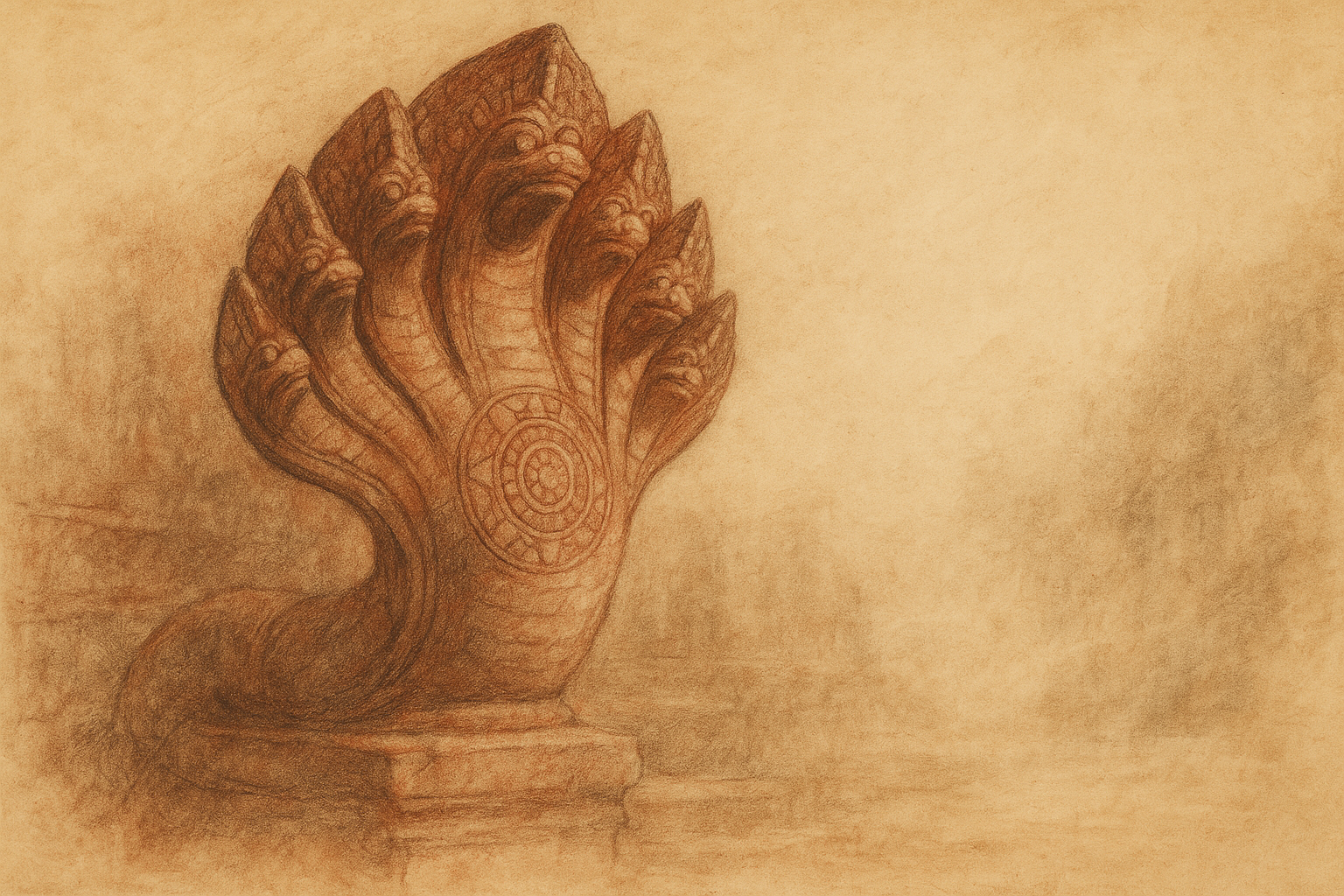
The Mandala at the Heart of the Serpent
3 min read
Sanctuary of Meaning · Journal Entry
Lucas Varro
All things shine not with their own light,
but from the stillness they guard.
—from a roadside note, driving home from Phnom Penh
—
The rains had just passed through the capital, leaving the air washed, tender, and still. After a luminous weekend in Phnom Penh—sharing a joint exhibition with my dear friends Ponleu and Alda Waddell—Annie and I began the long, quiet drive home to Siem Reap.
Alda remained in the city, her studio rooted in Phnom Penh, but her work lingered with me. Her paintings—radiant, spiralling—seemed to echo something older than memory: the mandala patterns carved into the chests of the naga guardians at Angkor.
One tiny dot of paint at a time, she had drawn their forms from the stone—translating sacred geometry into pigment and breath. As the road unrolled beneath us, shimmering with late light, I found myself tracing those same patterns in my mind: concentric forms coiled across serpent bellies, etched into sandstone with a precision both mathematical and mythic.
How many times had I passed them by—camera in hand, mind elsewhere—without pausing to truly see?
—
To the casual eye, they appear ornamental—floral medallions, stylised discs, perhaps ceremonial shields. But once the eye is opened, the meaning deepens.
These are mandalas. Sacred diagrams.
And they are not random.
In Khmer cosmology, the naga is both guardian and ancestor. He is the bridge—between water and earth, between mortal and divine. His body forms the balustrades of temple causeways, his heads rise in sheltering arcs at the threshold of holy ground. Seven heads, sometimes nine—arching not in menace, but in protection.
And at the heart of his form—on the chest where his silence breathes—rests a single, unbroken shape.
The mandala.
Not an adornment, but a seal.
Not armour, but offering.
Not strength alone, but structure—the pattern of the universe drawn into the flesh of myth.
—
In Hindu and Buddhist cosmology, the mandala is the universe made visible: the world spiralling outward from a sacred centre. In silence and symmetry, it becomes a mirror of Mount Meru—a cosmic axis, a diagram of divine order.
Carved into the chest of a naga, the mandala becomes a convergence point.
A still point of spiritual force.
A yantra of protection.
A silent hymn of kingship, guardianship, and eternal return.
Some say these patterns are chakra symbols—echoes of Tantric energy maps woven into Khmer stone. Others see in them the mark of sacred rule: the naga bearing not just temples, but the very order of the king’s dharma.
But the longer I dwell in their presence, the more these interpretations dissolve.
The naga is the bridge.
And the mandala at his heart is not a key—but a doorway.
—
These carvings are not uniform. Some shimmer with layered lotus petals, geometric rings, interlacing wheels. Others are spare—only a single line, stylised and serene. You find them where the world changes: at entrances, causeways, liminal spaces.
Places of passage.
This cannot be coincidence.
The naga appears wherever movement becomes meaning—where crossing over asks more than footfall. And the mandala is his seal, his blessing, his invitation into unseen dimensions.
They were never meant to be read.
They were meant to be entered.
Felt.
Allowed to open—like a flower, or a breath, or a forgotten prayer.
What god breathes
through the belly of the stone—
silent, coiled, awake?
—
Perhaps the ancient sculptors understood. Perhaps they carved not just with chisels, but with reverence—tracing circles they no longer needed to explain, only to repeat.
A seal of stillness.
A wheel of return.
Not outward motion, but inward.
Toward the centre.
Toward what cannot be spoken.
—
We reached Siem Reap just after dark. The trees stood hushed along the road. The sky lay wide with stars.
And still the symbol remained—burning softly in the space between thought and breath.
Stone serpent.
Sacred circle.
Cosmic heart carved into silence.
These are not decorations.
They are invitations.
—
Some truths
are not spoken in stone—
they are circled.
—
The naga does not guard the way forward—he guards the sacred centre we forgot was already within.
Also in Library
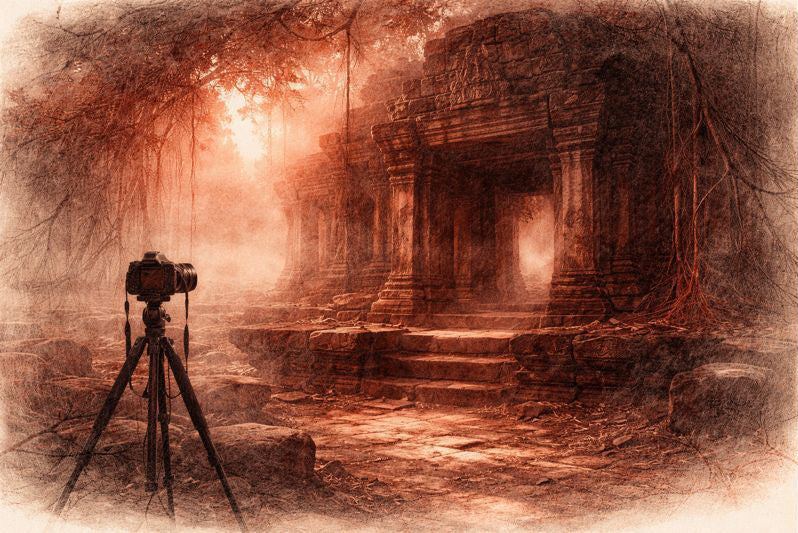
Before the Shutter Falls
3 min read
Before the shutter falls, fear sharpens and doubt measures the cost of waiting. In the quiet hours before dawn, the act of not-yet-beginning becomes a discipline of attention. This essay reflects on patience, restraint, and the quiet mercy that arrives when outcome loosens its hold.
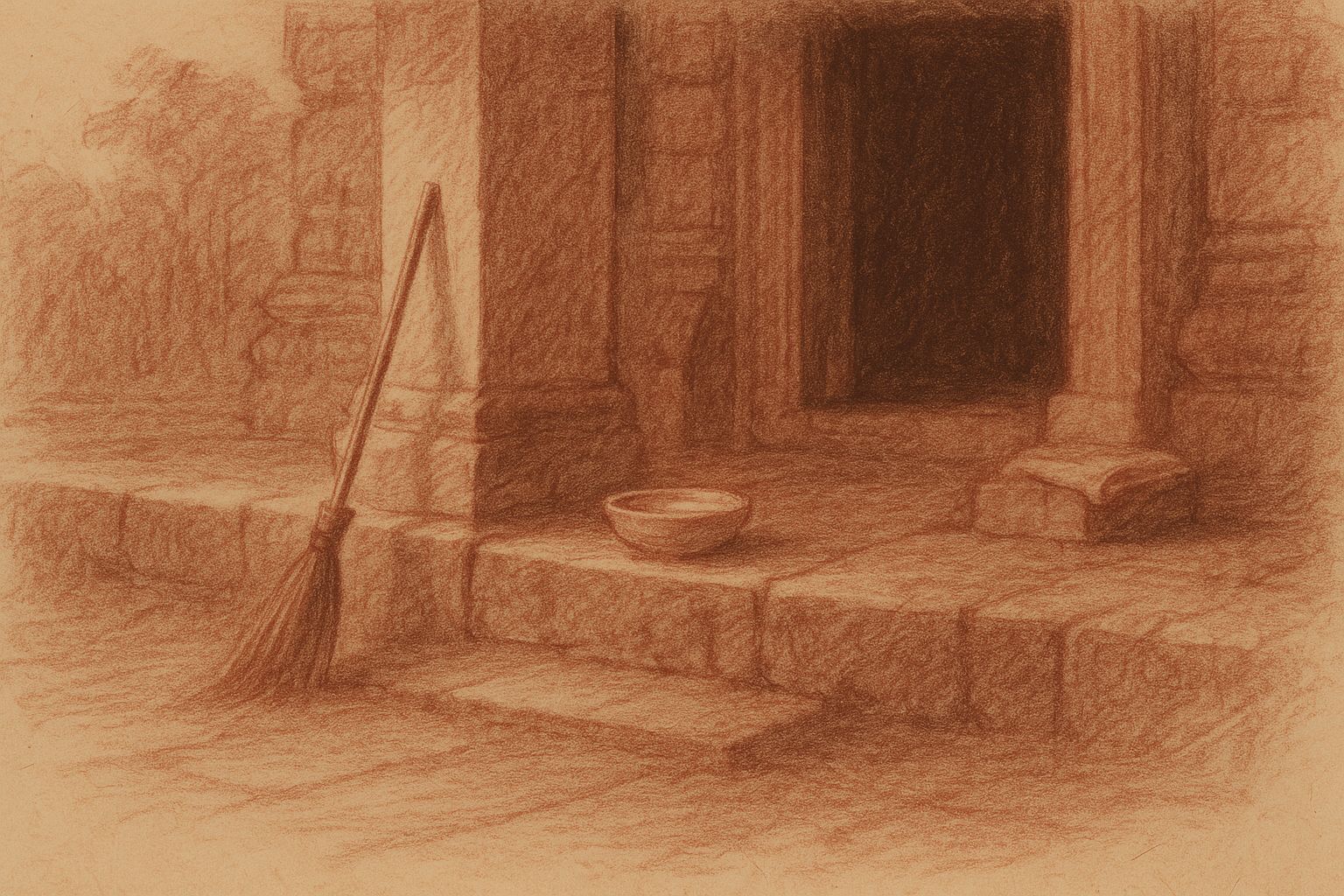
Those Who Keep the Way Open — On the Quiet Guardians of Angkor’s Thresholds
3 min read
Quiet gestures shape the way into Angkor — a swept stone, a refilled bowl, a hand steadying a guardian lion. This essay reflects on the unseen custodians whose daily care keeps the thresholds open, revealing how sacredness endures not through stone alone, but through those who tend its meaning.
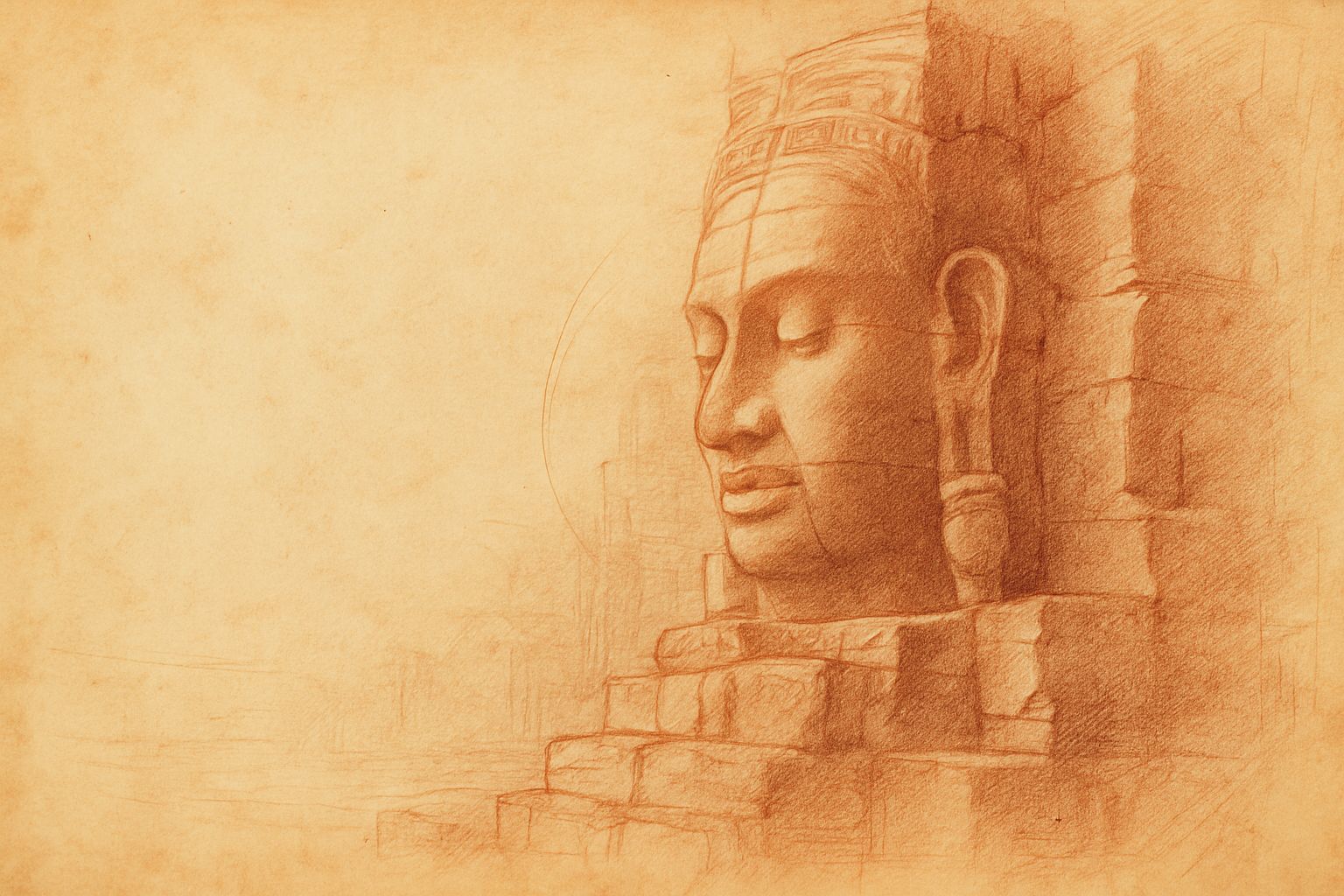
Multiplicity and Mercy — The Face Towers of Jayavarman VII
5 min read
A new vision of kingship rises at the Bayon: serene faces turned to every horizon, shaping a world where authority is expressed as care. Moving through the terraces, one enters a field of steady, compassionate presence — a landscape where stone, light, and time teach through quiet attention.
Join My Studio Journal
Receive occasional letters from my studio in Siem Reap—offering a glimpse into my creative process, early access to new fine art prints, field notes from the temples of Angkor, exhibition announcements, and reflections on beauty, impermanence, and the spirit of place.
No noise. No clutter. Just quiet inspiration, delivered gently.
Subscribe and stay connected to the unfolding story.
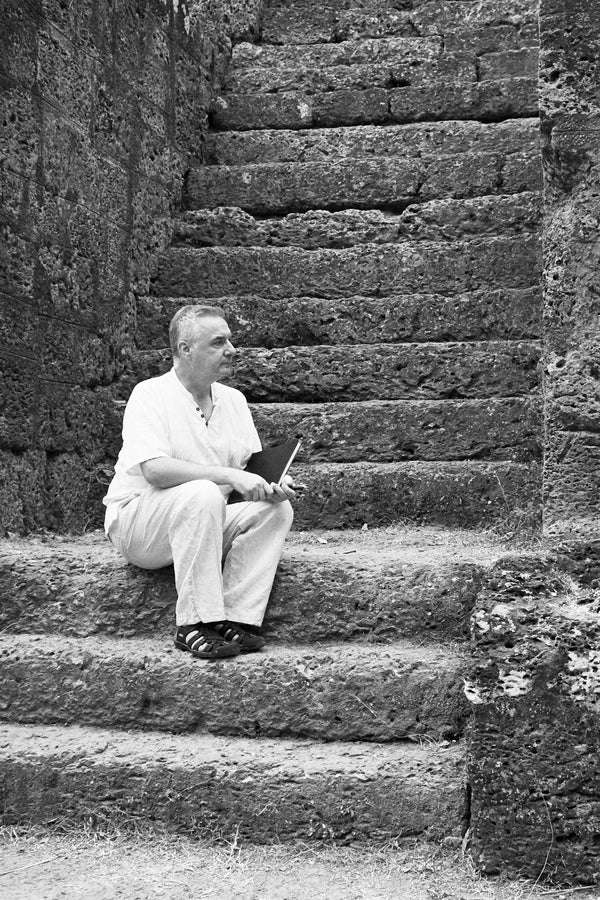
Join My Studio Journal
Receive occasional letters from my studio in Siem Reap—offering a glimpse into my creative process, early access to new fine art prints, field notes from the temples of Angkor, exhibition announcements, and reflections on beauty, impermanence, and the spirit of place.
No noise. No clutter. Just quiet inspiration, delivered gently.
Subscribe and stay connected to the unfolding story.
